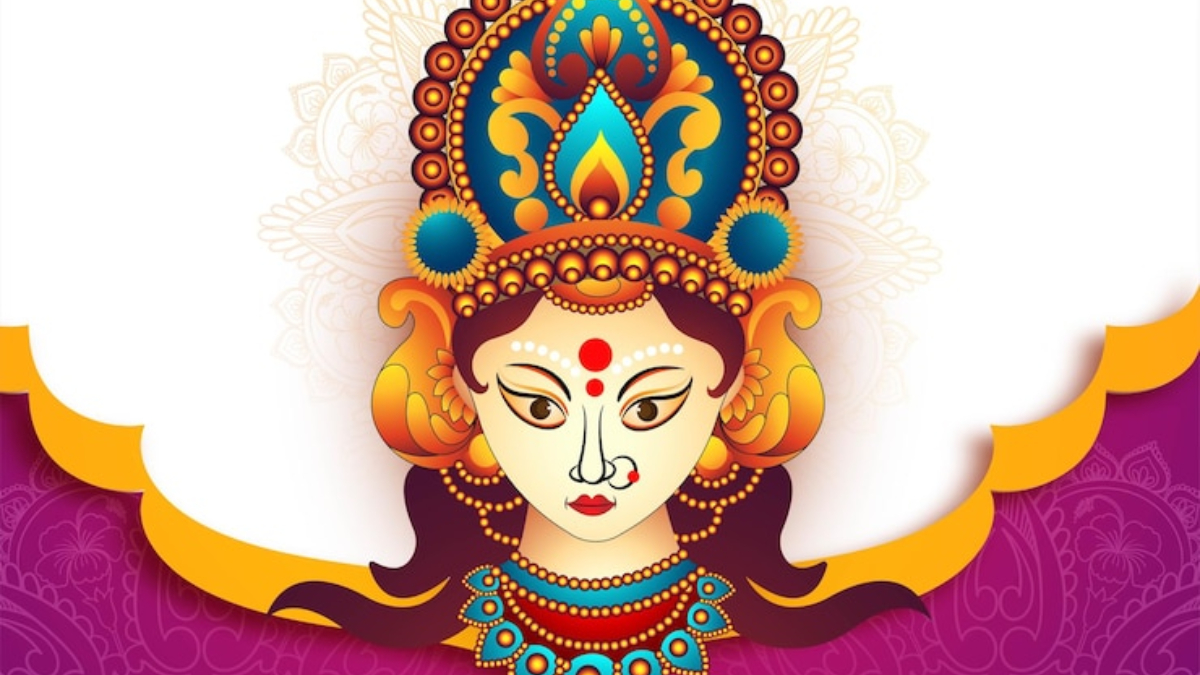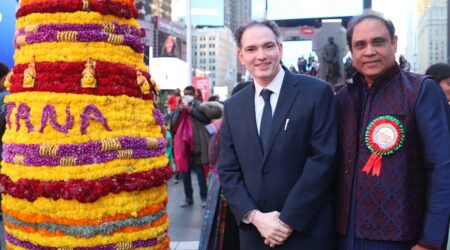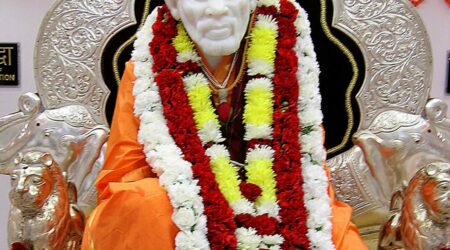By Syama Allard
A nine-night festival during the Hindu month of Ashwin, Navaratra is a celebration of the Feminine Divine. According to the Vedas, everyone and everything originates from an absolute spiritual source referred to as Brahman (Divine), which is both the cause and maintenance of creation.
Depending on the follower, as there is a wide spectrum of understanding when it comes to the nature of Brahman, Hindus may worship the Divine in both male and female forms, as well as animal forms, or even no form at all.
Celebration of the Feminine Divine
The feminine aspect is known as Devi, the goddess, which is a manifestation of Shakti, the creative and energetic force of the Divine. Navaratra is not only about honoring the role these various female manifestations e.g. Lakshmi, Parvati, Saraswati, play in Hinduism, but also the role the loving, compassionate, and gentle, yet sometimes powerful and fierce feminine energy plays in our lives.
Each night honors a different form of Shakti

Some traditions celebrate Navaratra by using each day to honor one of the nine forms of Durga, all of which display the following specific qualities and attributes:
Shailaputri: Seen as the “mother of nature,” she is depicted riding a bull and holding a lotus flower in one hand and a trident in the other.
Brahmacharini: Said to bestow success and victory, she holds prayer beads in her right hand and a water pot in her left, representing the practice of penance in pursuit of an auspicious goal.
Chandraghanta: The third night is dedicated to Chandraghanta, who’s named for the half-moon shaped like a bell on her forehead, which is described as her third eye. With ten hands holding various weapons, Chandraghanta rides a tiger, establishing justice and bestowing strength and courage to devotees.
Kushmanda: Usually depicted with eight arms, she rides a lion and is known for bringing energy and light to the world.
Skandamata: Seated on a lotus, emphasizing her divine nature, she has four arms and carries an infant Kartikeya on her lap.
Katyayani: With wild hair, and depicted with up to 18 arms, all holding weapons, she dispels darkness and evil, bestowing peace among her devotees.
Kalaratri: Dark-complexioned, with four arms and disheveled hair, she is also among Durga’s most menacing forms.
Mahagauri: The eighth night is dedicated to Mahagauri, whose name means “extremely white.” Wearing white, she is a symbol of tranquility and serenity, alleviating the suffering of her devotees.
Siddhidatri: The last night is dedicated to Siddhidatri, whose name means “giver of supernatural powers.” Seated on a lotus flower, she instills devotion into the hearts of devotees, granting them happiness and wisdom.
Through Navaratra, all of Durga’s forms, which represent the multifaceted aspects of the divine feminine energy we all experience and benefit from in life, are honored with deep reverence and gratitude.
Celebration of Druga, Lakshmi, Saraswati

There are many who celebrate Navaratra by worshipping not just Durga, but also Lakshmi and Saraswati.
In this approach, Navaratra signifies three stages of an aspirant’s spiritual journey, each personified by one of these goddesses. The first three days of the festival is dedicated to Durga, who destroys not only negative beings but also symbolizes the destruction of negative propensities. The war she wages against her enemies can be likened to the war we wage with our minds and senses.
The next three days of Navaratra are dedicated to Lakshmi, who is known as the “Goddess of Wealth,” as she is like a mother who gives her children what they need in order to succeed. The last three days of Navaratra are therefore dedicated to Saraswati, the “Goddess of Wisdom” who is capable of bestowing this knowledge.
Slaying the demon Mahishasura

The tenth and last day of Navaratra is called Vijayadashami, a festival of victory signifying the dawning of spiritual truth. Because Navaratra is specifically about recognizing the important role the power of Shakti plays in helping one attain this truth, observers celebrate Vijayadashami by commemorating certain Hindu stories that illustrate this power.
One such famous story is that of Durga and Mahishasura. After attaining his wish — to be undefeated against any man or god, from the Lord Brahma, Mahishasura used his newly acquired power to wage war against and subdue the gods. Seeking help, the gods approached Brahma, Shiva, and Vishnu. Manifesting from the trio’s combined energies, Durga engaged in battle with Mahishasura before eventually killing him.
Praying to the Mother Earth
As Navaratra occurs during India’s fall harvest season, it is typical for Hindus to pray to Bhumi Devi, the Mother Goddess of Earth who is revered as the source of all food. One of Hinduism’s fundamental teachings is that everything one receives in life is a gift from the Divine, and should therefore be honored as such.
In this spirit of recognition, it is therefore encouraged to carry out various rituals during Navaratra in honor of Bhumi Devi, for life could not exist without all that she provides.
Time for Garba

Navaratra is customarily celebrated like many festivals observed within Hinduism: fasting, reflection, meditation, sacrifices, bonfires, and any other appropriate rituals.
But it’s the ‘Garba’ dance of Gujarat that makes the festivities of Navaratra stand out as particularly unique. A vibrant scene of elegant, yet spirited dancers in colorful attire, whirling in synchronized, concentric circles of rhythmic steps to soulful and dynamic drum beats, Garba events tend to magnetically draw in participants and viewers, whether they are aware of its deeper symbolic meanings or not.
(Text Courtesy: Hinduamerican.org)












